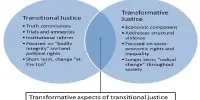Socioeconomic characteristics including better income and education are correlated with lower exposure to outdoor air pollution in certain nations, including the United States. But this isn’t the case in China. In fact, it’s the exact opposite.
For the first time, a study led by the University of Washington has found that higher socioeconomic status residents of China are actually more exposed to ambient air pollution from outside. This discovery is at odds with earlier research conducted across North America that has demonstrated that those with lower socioeconomic status typically face higher pollution levels.
The findings were published June 8 in Environmental Health Perspectives.
“Environmental disparities reflect a location’s history, culture, economics and power dynamics,” said co-author Julian Marshall, UW professor of civil and environmental engineering. “Those factors differ between the U.S. and China, so we see different patterns in environmental inequalities.”
With the exception of a few high-income nations, variations within a country have not been as thoroughly investigated as differences in ambient air pollution between nations.
One-fourth of the 4 million annual deaths globally that are related to ambient air pollution, which is linked to lung cancer, chronic respiratory disorders, and stroke, occur in China.
Environmental disparities reflect a location’s history, culture, economics and power dynamics. Those factors differ between the U.S. and China, so we see different patterns in environmental inequalities.
Julian Marshall
The amounts of fine particulate matter (PM2.5) and nitrogen dioxide (NO2) in the air were studied by the researchers. The reason the researchers chose these contaminants is that they are often monitored and have health impacts linked to exposures. Additionally, estimates of pollution levels with small-scale spatial resolution (1 kilometer) are now accessible.
The projected annual average ambient levels of these pollutants for the year 2015 were merged with data on national demographics, which included socioeconomic status elements like income and educational attainment. The team also took into account issues like minority status and rural-to-urban migration. The researchers compared their findings using a variety of socioeconomic status measurement techniques, such as individual and community-averaged scores.
Surprisingly, the researchers discovered that higher socioeconomic class groups had higher ambient NO2 and PM2.5 levels. Additionally, they discovered that the dominant ethnic group had a greater socioeconomic position than the average for nine minority groups, as well as higher socioeconomic status for long-term urban residents compared to populations of migrants from rural to urban areas.
The team hypothesizes that a range of factors, including distinct economic, urbanization, and industrialization characteristics of the countries, may be responsible for the different associations between socioeconomic status and ambient air pollution. China, the greatest emerging economy in the world, has witnessed rapid urbanization and significant rural-to-urban migration in recent decades.
In China, a large number of individuals have recently moved to urban areas to work in the manufacturing sector, which accounts for a sizable amount of the country’s GDP. Due to the higher average wage of these jobs, income gaps have widened. People are more likely to reside close to their place of employment, which exposes them to greater manufacturing-related air pollution levels.
Comparatively, racial prejudice both in the past and present contributes to trends of environmental imbalance in the US. In the United States, low-socioeconomic areas sometimes lack the resources and political clout needed to block sources of pollution like motorways and other undesirable land uses.
These findings may apply to other countries, the researchers said, particularly low and middle-income countries that have seen economic development in recent decades.
“The patterns in China reflect that China’s economic development is positively related with both socioeconomic status and air pollution,” said lead author Yuzhou Wang, a UW doctoral student in the civil and environmental engineering department.
“However, with further urbanization and economic reforms in China, the positive relationship between socioeconomic status and air pollution exposure may weaken or shift in the future.”
Additional coauthors on the paper include Yafeng Wang from the Institute of Social Survey Research, Peking University, Beijing, China; Hao Xu from the Department of Earth System Science, Tsinghua University, Beijing, China; and Yaohui Zhao from the National School of Development, Peking University, Beijing, China.
This research was funded by the U.S. Environmental Protection Agency, the U.S. National Institute on Aging, National Natural Science Foundation of China, China Medical Board and the Tsinghua Scholarship for Overseas Graduate Studies.
















